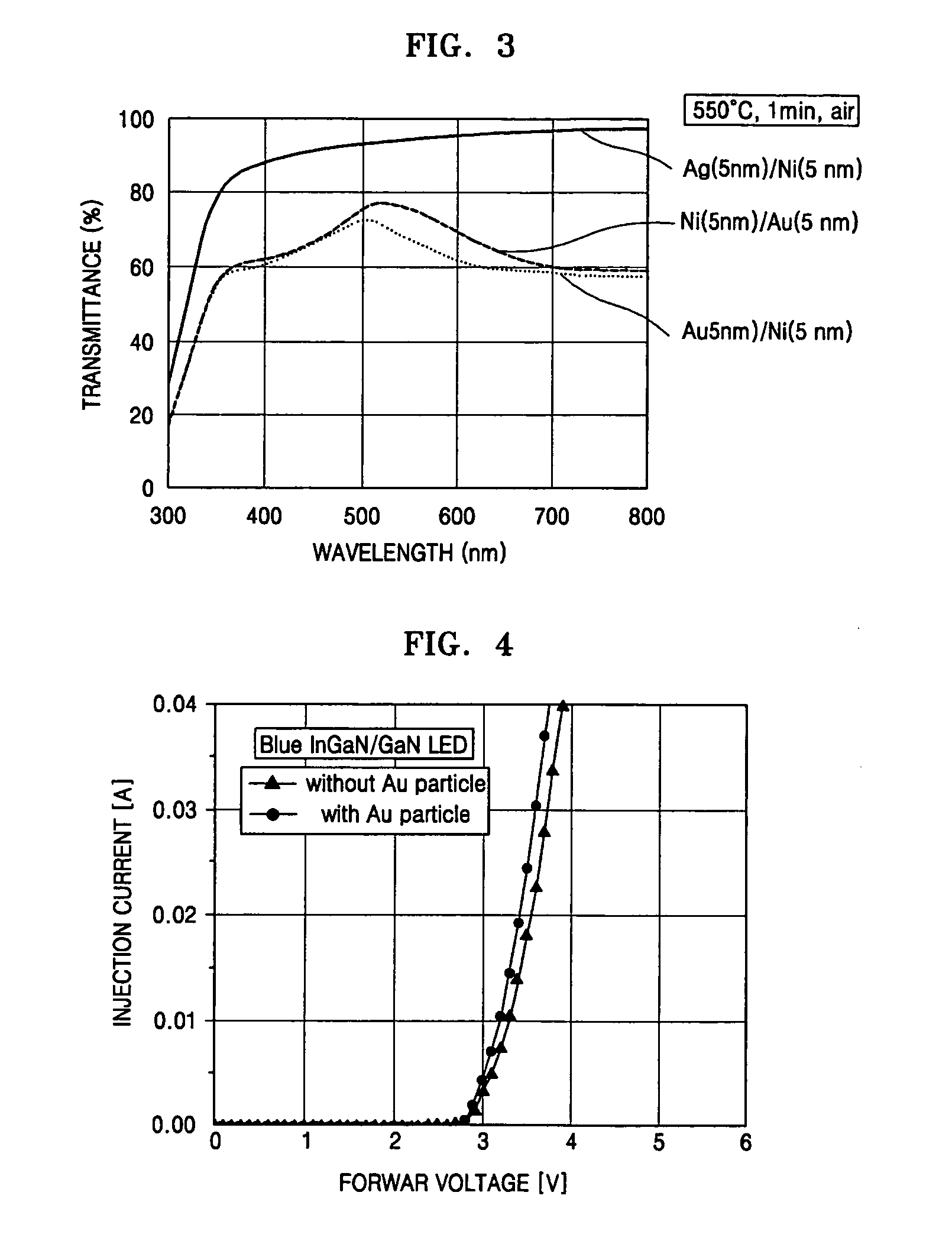Top-emitting nitride-based light-emitting device and method of manufacturing the same
a technology of topemitting nitride and light-emitting device, which is applied in the direction of solid-state devices, electric lighting sources, and light sources. it can solve the problems of high light reflectivity, low work function, and inability to meet the requirements of large-area, high-brightness light-emitting device, etc., and achieve low specific ohmic contact resistance, low light transmittance, and low work function
- Summary
- Abstract
- Description
- Claims
- Application Information
AI Technical Summary
Benefits of technology
Problems solved by technology
Method used
Image
Examples
first embodiment
[0038] Referring to FIG. 1, a top-emitting light-emitting device according to the present invention includes a substrate 110, and a buffer layer 120, an n-cladding layer 130, an active layer 140, a p-cladding layer 150 and a transparent multilayer ohmic contact 160 sequentially formed on the substrate 110. The top-emitting light-emitting device further includes a p-electrode pad 180 and an n-electrode pad 190.
[0039] The top-emitting light-emitting device is mainly divided into a light-emitting structure including the substrate 110, the buffer layer 120, the n-cladding layer 130, the active layer 140, and the p-cladding layer 150 and a p-electrode structure including the transparent multilayer ohmic contact 160 formed on the p-cladding layer 150. The substrate 110 may be formed from sapphire, silicon carbide (SiC), Si, or gallium arsenide (GaAs). Optionally, the buffer layer 120 may not be formed.
[0040] Each of the layers from the buffer layer 120 up to the p-cladding layer 150 incl...
second embodiment
[0055] A curve with dash marks on the graph represents light transmittance obtained by annealing a light-emitting device with a p-electrode structure according to the present invention at 530° C. The p-electrode structure comprises the grid cell layer 161 composed of a regular grid array of Au particles with a size of 20 μm on the p-cladding layer 150, the surface protective layer 163 formed by sequentially depositing Ni (5 nm) and Au (5 nm), and the transparent conducting layer 165 made of ITO with a thickness of 100 nm.
[0056] A curve with dot marks represents light transmittance obtained by annealing a light-emitting device with a conventional p-electrode structure formed by sequentially depositing Au (5 nm) and Ni (5 nm) on the p-cladding layer 150 at 530° C.
[0057] As evident from FIG. 3, the light-emitting devices according to the present invention exhibit improved light transmittances over the conventional light-emitting device. Furthermore, the light-emitting devices accordin...
PUM
 Login to View More
Login to View More Abstract
Description
Claims
Application Information
 Login to View More
Login to View More - R&D
- Intellectual Property
- Life Sciences
- Materials
- Tech Scout
- Unparalleled Data Quality
- Higher Quality Content
- 60% Fewer Hallucinations
Browse by: Latest US Patents, China's latest patents, Technical Efficacy Thesaurus, Application Domain, Technology Topic, Popular Technical Reports.
© 2025 PatSnap. All rights reserved.Legal|Privacy policy|Modern Slavery Act Transparency Statement|Sitemap|About US| Contact US: help@patsnap.com



